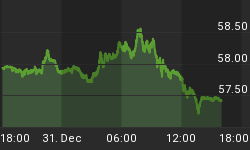Combining the net speculative futures positions of all 5 major currencies against the USD, we find CHF positioning to remain the only net long against USD, ever since the SNB decision end its EURCHF peg in January. GBP positioning is the only currency to show steady improvement against USD. Currency-by-currency analysis below.

Net longs in CHF vs USD have gradually eased since reaching 10-month high in early June.
Net speculative GBP hit the lowest net short (least negative) positioning since November, at 9,788 contracts. This week's release of the BoE quarterly inflation report shall prove crucial in tipping the balance closer to net long positioning, with most traders expecting at least one member of the BoC's MPC to vote for a rate hike this week.
CAD net shorts undergo the worst deterioration among all currencies, with 56,067 short contracts exceeding longs, the biggest net short balance since March 2014. This is a classic case of a central bank throwing the towel over tumbling oil with two rate cuts in 6 months as GDP shrank in five consecutive months, a pattern last seen in 2009.
AUD net shorts are a close 2nd to CAD deterioration as deepening erosion in the nation's mining sector force the RBA to keep the door open for further easing despite rapid Aussie depreciation. Each dead-cat bounce in Chinese equities is becoming a new reason to sell Aussie dips.
EUR net shorts continue their long and slow rebound, with US macro dynamics taking centre stage as Greece issues are pushed aside. EURUSD futures trading is the biggest in the IMM currency complex as the pair is the most heavily traded in the $5.3 trillion spot market. The pair also remains used as a proxy for the USDX.
JPY net shorts increased for the 2nd straight week after having diminished steadily throughout June and most of July. With global equities fixated at the uncomfortable combination broadening energy damage and a US central bank flirting with tightening, JPY speculators are incapable to tread far away from the safe haven route.
















